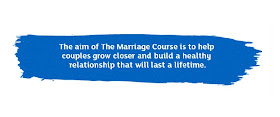
Clint Eastwood both stars and directs Gran Torino, and in the process all but resurrects his long-gone Dirty Harry character - albeit in retirement and with a different name.
Warning - the following review contains several spoilers!
The story concerns newly widowed retiree Walt Kowalaski, a bitter, angry cynical racist Korean War veteran, who spends his days brooding with resentment against all the changes that modern life has brought to his neighbourhood. His own kids have long since joined the white-flight to the suburbs, their children appear to Walt to be vain and vacuous; while they have been replaced with immigrants from South-East Asia whose language, culture and customs irritate him. To add to his irritations he is pursued by an eager, naive young Catholic priest who had made a promise to his late wife to pastor him after her death. Worst of all though, the neighbourhood - once peaceful - is ruled by ruthless and violent gangs.
The main thrust of the movie concerns the way in which Kowalski ends up as a community hero for standing up to the gangs, often violently, as they try to recruit their kids to their ranks. In turn, Kowalski himself softens in his attitude to his Hmong neighbours as he gradually begins to see them as fellow victims of the forces of destruction in the neighbourhood. Such a story might seem quite naive, and the idea of a an inner-city collaboration between new immigrants and old racists against criminals somewhat far-fetched. This isn't the case however. I remember meeting an old civil rights campaigner in Philadelphia, who fought against racist city Mayor Frank Rizzo (initially elected by the white minorities to defend their interests against the Black communities). He told me how he subsequently joined Rizzo's campaign team for his re-election, because this potentially violent, right-wing Mayor with a thuggish reputation was the only one of the candidates who he thought would actually wage war on the drug-gangs who were by then a far greater threat to the communities of North Philadelphia than the city government! In Kowalski's turnaround - there is one pivotal scene, when he suddenly realises that he has 'more in common with these gooks than with [his] own family'.
The film, moves towards an inevitable show-down between Kowalski and the gangs, especially after the brutal rape of a his young next-door-neighbour, who has forged a bond with him as they have together resisted gang-power. The fact that he was unable to protect his young friend, pushes Kowalski towards a definitive final response - and we see him polishing his gun before going to confront them. The final scene though comes as a complete surprise. (spoiler warning!) unarmed, Kowalski allows himself to be gunned down in front of witnesses. As a result of his self sacrifice justice is achieved as the gang are imprisoned, and his friends are saved as the threat to the neighbourhood is removed. Kowalski's body absorbing bullet after bullet as he seems to soak up all the evil in a breathtaking act of self-sacrifice is loaded with strongly redemptive imagery - which Eastwood seems to re-enforce as the body is pictured lying with his arms outstretched in a cruciform shape!
The film has caused a lot of discussion, with both rave reviewers and detractors being very strong in their responses. It certainly has one or two flaws, but Eastwood himself, snarling and growling his way to the gritty conclusion is on top-form, and the much criticised story-premise, is, I think, with some precedents in recent American history. The film gains its 15 certificate because of the language and violence it contains, so its not for the easily offended and is a film for adults to consider. In its defence, the language is realistic for its context, (rather than just used for its shock value, as in say The Big Lebowski) and the violence while essential to the plot is not gratuitous or voyeuristic.
Films in this genre walk the curious line between social-commentary, serious issues and entertainment, and on the whole Gran Torino manages that very well. There are several funny moments, some brilliant dialogue, a couple of pieces of hilarious subtitling when Kowalski and the aged Hmong grandmother are insulting each other with no language in common. However this doesn't detract from the presentation of the sadness of the all too real problems of gang violence and abuse; nor from the dark, but inevitable progress of the film towards its climactic and stunning conclusion.










